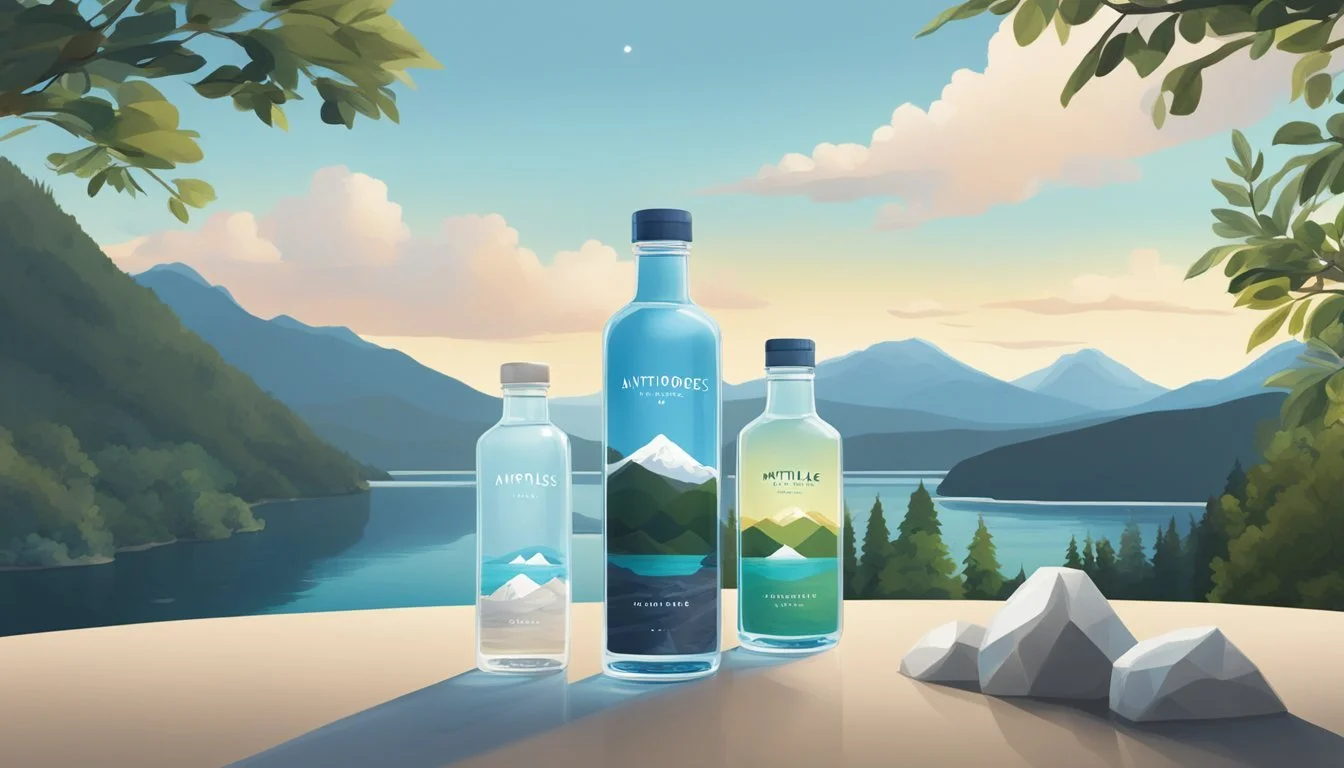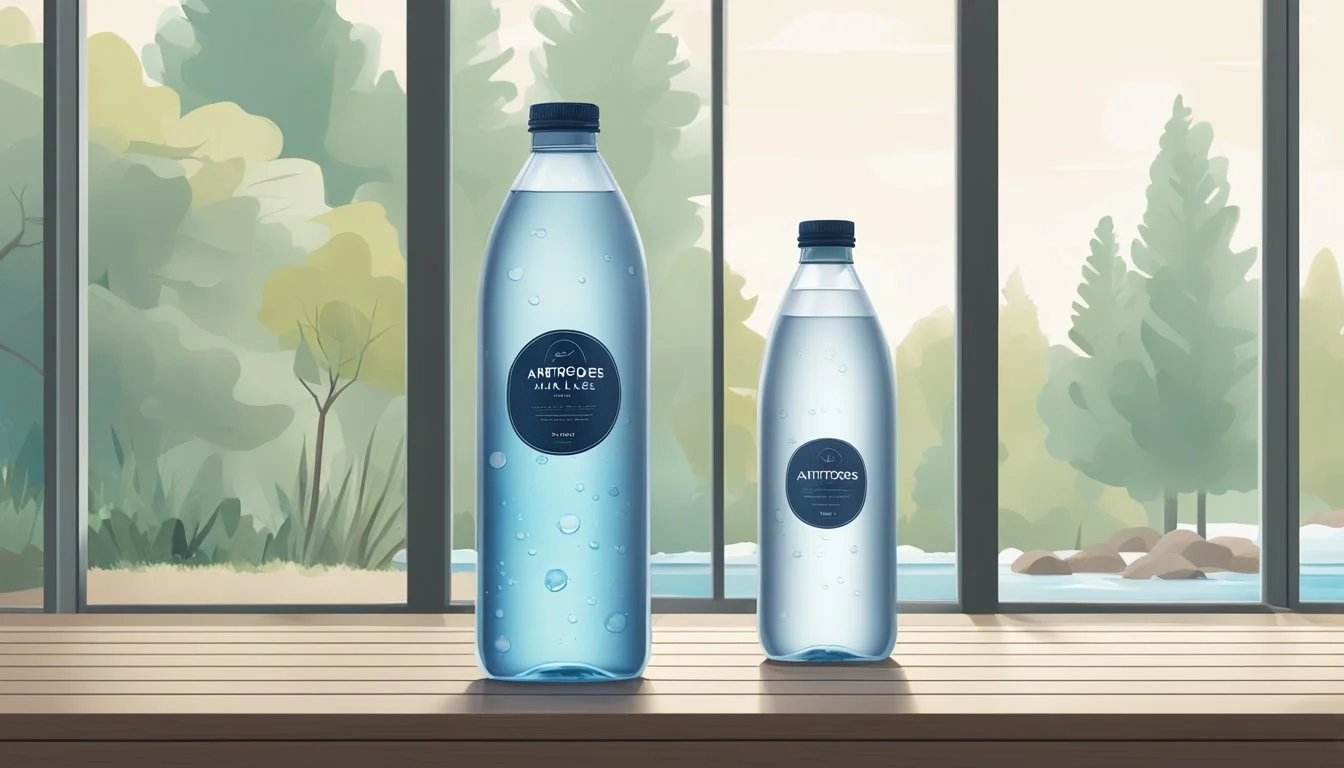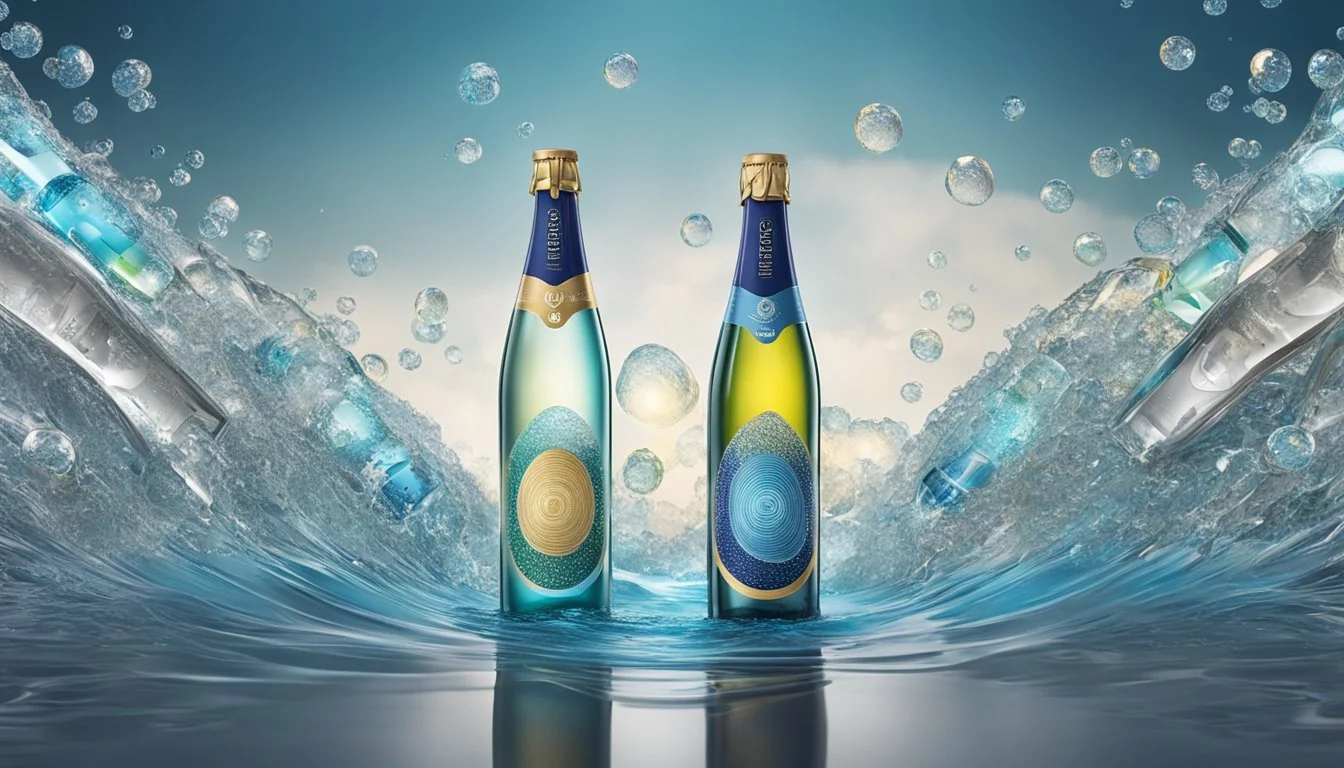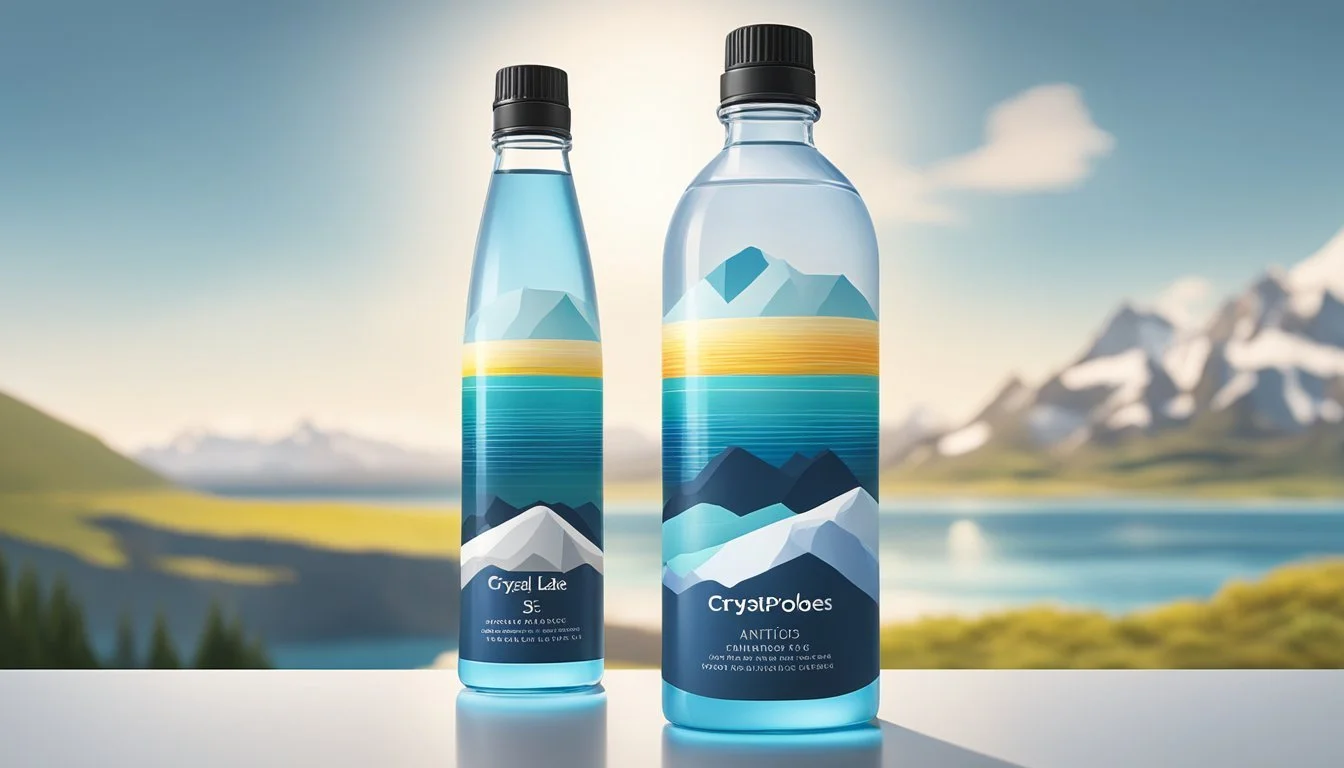Antipodes vs. Crystal Lake
The Ultimate Bottled Water Showdown
Antipodes and Crystal Lake are two prominent names in the bottled water industry, each promising unique benefits to consumers. As bottled water has risen to be a major player in the global market, selecting the best option can be daunting. Both brands claim high-quality standards and specific perks, making the decision even more complex. In terms of overall quality and taste, Crystal Lake edges out slightly against Antipodes due to its balanced mineral content and smooth flavor profile.
Antipodes, originating from New Zealand, is recognized for its elegant design and the purity of its water source. The brand emphasizes a clean, neutral taste, appealing to those who prefer a minimalist approach to hydration. On the other hand, Crystal Lake offers a robust mineral composition, contributing to a crisper and more refreshing experience that many consumers appreciate. This comparative advantage positions Crystal Lake as a favorite in taste tests and among water connoisseurs.
Moreover, environmental consciousness plays a significant role in consumer choice. Antipodes uses low-profile glass bottles, reflecting a commitment to sustainability. While Crystal Lake also prioritizes eco-friendly practices, its focus on delivering a rich-tasting product remains the key selling point. Choosing between Antipodes and Crystal Lake ultimately comes down to personal preference, considering both taste and environmental impact.
Comparing Bottled Water Basics
Understanding the basics of bottled water helps in appreciating the differences between Antipodes and Crystal Lake. The following information breaks down essential elements such as definitions and types.
What Is Bottled Water?
Bottled water is drinking water packaged in plastic or glass bottles for individual consumption.
It can come from a variety of sources including natural springs, wells, and municipal supplies. The water undergoes various purification processes to ensure safety and quality. It's available as still water, which is non-carbonated, and sparkling water, which contains added carbon dioxide for fizziness.
These products must meet stringent safety standards to be sold commercially. Quality, taste, and mineral content vary widely depending on the source and treatment processes used.
Types of Bottled Water
Still Water: This is non-carbonated water. It can be sourced from natural springs, wells, or be filtered from municipal supplies. It is known for its smooth taste and is the most common type of bottled water.
Sparkling Water: This water contains added carbon dioxide, giving it a fizzy texture. It may come from natural springs or be artificially carbonated.
Natural Spring Water: Sourced directly from underground springs, this water is prized for its mineral content and natural purity. The taste and composition reflect the geology of the area.
Comparing these types helps in understanding consumer preferences and health benefits.
Source and Origin
Understanding the origin and source of bottled water is crucial for assessing its quality and taste. This section explores the unique characteristics of Antipodes and Crystal Lake, focusing on their natural origins and the specific regions from which they are sourced.
Antipodes Water Source
Antipodes hails from the pristine landscapes of New Zealand. Specifically, this water is drawn from an ancient aquifer located deep beneath the surface. The water has been naturally filtered over centuries through layers of rock and sand.
This natural filtration process yields exceptionally pure water, free of modern contaminants. The aquifer's depth ensures that the water remains untouched by surface pollution. The volcanic origin of the landscape also imparts a unique mineral profile to the water, contributing to its distinct taste and high purity levels.
Crystal Lake Water Source
Crystal Lake bottled water originates from the pristine, mountainous regions of the French Alps. The water is sourced from natural springs, which are renowned for their clarity and purity. These springs are fed by melted snow and ice from the high altitudes, ensuring a continuous supply of fresh water.
The water undergoes minimal processing to retain its natural properties. The unique geological formations in the Alps add beneficial minerals to the water, such as calcium and magnesium. This contributes to the water's crisp and refreshing taste.
Importance of Water Source
The source of bottled water significantly impacts its quality, taste, and mineral content. Water from deep aquifers, such as Antipodes, offers a high level of purity due to natural filtration processes and protection from surface contaminants. This type of water is often prized for its clean and smooth taste.
In contrast, spring water like Crystal Lake benefits from the natural replenishment and mineral enrichment provided by mountainous regions. These areas ensure the water is both fresh and rich in essential minerals. Consumers often seek out such natural spring waters for their perceived health benefits and superior taste.
Choosing bottled water involves evaluating the source, as it directly influences the consumer's experience and satisfaction.
Health and Safety Standards
Evaluating the health and safety standards of Antipodes and Crystal Lake is crucial. This covers their regulatory compliance, the health benefits provided, and their adherence to international guidelines.
Regulations and Safety
Both Antipodes and Crystal Lake adhere to stringent health and safety standards set by international and national bodies.
Compliance with regulations from the International Bottled Water Association (IBWA) ensures that both brands meet or exceed global standards for bottled water. The IBWA mandates testing for contaminants like lead and other harmful substances. Antipodes is sourced from natural springs in New Zealand, and it undergoes regular quality checks to ensure purity and absence of contaminants.
Crystal Lake, on the other hand, sources its water from U.S. artesian wells. It is subjected to rigorous testing by the Environmental Protection Agency (EPA), ensuring that the bottled water is safe for consumption. Consumer Reports have occasionally flagged bottled waters for PFAS chemicals, but Crystal Lake maintains that all their products are free from such contaminants.
Health Benefits of Water
Antipodes and Crystal Lake both offer distinct health benefits besides just hydration.
Antipodes boasts a naturally alkaline pH level, which can help neutralize acidity in the body and support overall digestive health. Its mineral content includes calcium and magnesium, important for bone health. Regular consumption of Antipodes can aid in maintaining a balanced internal pH and sufficient mineral intake.
Crystal Lake focuses on purified water enriched with electrolytes, enhancing rehydration and supporting bodily functions. The added minerals such as potassium and sodium are beneficial for those needing to replenish electrolytes. Both brands ensure their water is free from microbial contamination, making them safe choices for daily consumption.
By adhering to rigorous health and safety standards, Antipodes and Crystal Lake offer consumers safe and beneficial hydration options.
Bottled Water Brands
Bottled water brands vary widely in source, taste, and reputation. Understanding these differences can help consumers make informed choices about their preferred water.
International Brands
International bottled water brands are prominent in many markets due to their extensive distribution and marketing efforts. Brands like Evian and Fiji are renowned for their premium quality. Evian originates from the French Alps and is known for its smooth taste. Fiji, sourced from aquifers in the Fijian islands, boasts high silica content, enhancing its silky texture.
Voss, from Norway, is appreciated for its purity and sleek bottle design. San Pellegrino, an Italian sparkling water brand, is favored for its crisp, refreshing taste. Aquafina and Dasani, both products of major beverage companies, dominate global markets with their widespread availability and consistent quality.
Regional Favorites
Regional bottled water brands often cater to local tastes and preferences and may offer unique benefits like specific mineral compositions. Poland Spring, sourced from Maine, is a staple on the East Coast of the United States. Arrowhead, with sources in California and Colorado, is popular in the Western U.S.
Path and Penta are lesser-known but respected for their clean taste and commitment to sustainability. Eternal Water, another American brand, is famous for its naturally alkaline properties. These regional favorites may not have the international reach of larger brands but often maintain strong local followings.
Brand Reputation and Trust
Consumers often choose bottled water based on brand reputation and trust. Brands positioned as premium, like Evian, Fiji, and Voss, are associated with luxury and purity. Smartwater, known for its vapor-distilled process and added electrolytes, commands a loyal customer base due to its perceived health benefits.
In contrast, brands like Nestlé Pure Life and Dasani face scrutiny due to concerns about source transparency and environmental impact. Arrowhead and Poland Spring maintain trust through consistent quality despite being part of larger corporations. The reputation of a brand often influences consumer choices, highlighting the importance of transparency and sustainable practices in building trust.
Taste and Water Sommelier Insights
Comparing the taste profiles of Antipodes and Crystal Lake, it's essential to consider specific factors like mineral content, mouthfeel, and expert evaluations. Factors influencing taste and water sommelier insights provide valuable perspectives on these bottled waters.
Factors Influencing Taste
The taste of bottled water is primarily influenced by its mineral content. Antipodes is known for its balanced mineral composition, contributing to a smooth and refined taste. The presence of calcium, magnesium, and potassium imparts subtle flavors without overwhelming the palate. In contrast, Crystal Lake features a higher mineral presence, particularly magnesium, which gives it a robust and earthy tone.
Mouthfeel is also a critical factor. Antipodes offers a silky texture that coats the palate gently. Crystal Lake, with its slightly heavier mineral content, tends to provide a fuller and weightier sensation. These differences in mouthfeel and mineral flavor significantly affect overall preference.
Expert Opinions
Water sommeliers play a crucial role in evaluating the nuanced characteristics of bottled waters. Antipodes frequently receives praise for its pristine clarity and delicate nuances, making it a preferred choice among sommeliers. They highlight its clean finish and the subtle sweetness brought about by its balanced mineral profile.
Crystal Lake, on the other hand, is appreciated for its distinctive mineral richness. Although its bold flavors can be polarizing, many sommeliers commend its complexity and depth. This makes it a compelling option for those who enjoy more pronounced mineral tastes.
Both waters have their merits, with sommelier insights shedding light on the unique qualities that each brings to the table. These evaluations help guide consumers in making informed choices based on their taste preferences.
Environmental Impact and Sustainability
When evaluating the environmental impact and sustainability of Antipodes and Crystal Lake bottled water, the focus shifts to the bottling process and sustainable practices. Analyzing these aspects reveals key differences and shared concerns in their environmental footprints.
Bottling Process
The bottling process of both Antipodes and Crystal Lake significantly impacts the environment. Antipodes uses glass bottles, which, though recyclable, require substantial energy for production and recycling. Crystal Lake, on the other hand, uses plastic bottles, contributing to plastic waste and higher CO2 emissions.
Glass bottles tend to have a lower environmental impact in terms of resource depletion compared to plastic. However, the heavy weight of glass increases transportation emissions. Crystal Lake's plastic bottles are lighter but result in significant plastic pollution, especially if not recycled properly.
Municipal water supplies used by both brands also play a role. Sourcing from local taps conserves natural water resources but this does not negate the environmental toll of bottling and shipping.
Sustainable Practices
Sustainable practices distinguish Antipodes and Crystal Lake. Antipodes highlights its commitment to sustainable packaging, including the use of 100% recyclable glass bottles and efforts to reduce carbon footprints via eco-friendly production methods. Nonetheless, the frequent reuse and recycling of glass are crucial to maintaining these benefits.
Crystal Lake is exploring alternatives such as boxed water and reusable containers to mitigate its plastic usage. Efforts like transitioning to biodegradable packaging and encouraging consumer recycling set Crystal Lake apart. Additionally, both companies must address their carbon emissions, focusing on renewable energy sources for bottling and distribution operations.
Improvements in sustainable practices can lead to a significantly smaller environmental footprint for both brands, potentially setting industry-wide standards for bottled water production.
Consumer Experience
Antipodes and Crystal Lake offer different experiences in packaging and design, pricing, and accessibility, which influence consumer preferences and satisfaction.
Packaging and Design
Antipodes features minimalistic and sleek designs with clear, elegant bottle shapes. Consumers often appreciate this modern aesthetic, which fits neatly into various settings, from casual use to gourmet dining.
Crystal Lake, on the other hand, tends towards more traditional plastic bottles. These are practical and widely used by many for everyday hydration, but they may lack the visual appeal of Antipodes's offerings.
Consumers have noted that Antipodes's glass containers often feel more premium and sustainable. Crystal Lake's plastic bottles are convenient and lightweight, making them easy to carry and dispose of, appealing to those seeking practicality over style.
Pricing
Price considerations are crucial for consumers when choosing between these brands. Antipodes's pricing is generally higher due to its premium packaging and certain brand perceptions of luxury and high quality.
Crystal Lake is known for its more budget-friendly options, appealing to a wider consumer base. This economical approach makes it a go-to choice for daily consumption without breaking the bank.
While both brands offer different pricing levels, Antipodes often targets a higher-end market, whereas Crystal Lake focuses on affordability and accessibility. This difference significantly influences consumer choice depending on their budget constraints.
Accessibility
Accessibility of these bottled waters varies significantly. Antipodes is often found in upscale restaurants, specialty stores, and online platforms. Its distribution network is focused on areas where premium products are in demand.
Crystal Lake enjoys broader availability. It is commonly stocked in supermarkets, convenience stores, and vending machines, making it easy for consumers to find and purchase.
Both brands offer direct online purchasing options with delivery schemes. Crystal Lake's extensive distribution ensures easy access for everyday users, while Antipodes's selective availability caters to a niche market looking for exclusivity in their bottled water choices.
Additional Considerations
This section will compare the alkalinity and pH levels of Antipodes and Crystal Lake, as well as their unique selling propositions, to help consumers make an informed choice.
Alkalinity and pH Levels
Antipodes boasts a neutral to slightly alkaline pH level ranging between 7.5 and 8.0. This can benefit those looking to balance their body's pH and maintain a healthy alkaline state. The water is sourced from an aquifer and naturally filtered, ensuring its mineral content remains intact.
Crystal Lake, on the other hand, has a slightly acidic to neutral pH level between 6.5 and 7.0. Unlike Antipodes, it undergoes a rigorous reverse osmosis process, removing impurities and ensuring a high purity standard. This purification method may appeal to individuals preferring purified water with a neutral taste profile.
Unique Selling Propositions
Antipodes is marketed as a premium brand that emphasizes its natural origins and mineral-rich content. Its source from a pristine environment is a significant selling point, and the alkaline nature caters to specific health-conscious consumers. The packaging often highlights the purity and natural filtration process, appealing to those who appreciate sustainable and eco-friendly practices.
Crystal Lake differentiates itself through its thorough purification via reverse osmosis, ensuring the water is free from contaminants and impurities. This brand is ideal for consumers prioritizing purified water and consistent taste. Crystal Lake’s sleek and modern packaging may also attract customers looking for a stylish, minimalistic design.
These additional factors should be carefully considered by consumers to determine the most suitable bottled water for their needs.
The Bottom Line
When comparing Antipodes and Crystal Lake, several factors stand out.
Taste is subjective, but reviews often highlight Antipodes for its crisp, clean flavor. Consumers note Crystal Lake has a more neutral taste, lacking any metallic tang.
Mineral Content plays a key role for health-conscious buyers. Antipodes boasts a balanced pH of approximately 7.3 to 7.7, which is beneficial for maintaining bodily equilibrium. Crystal Lake also has a balanced pH but tends to be slightly lower.
Sourcing reveals distinct origins. Antipodes sources its water from deep aquifers in New Zealand, contributing to its purity. Crystal Lake, however, sources its water from protected springs in the United States, ensuring a robust filtration process.
Packaging is another important factor. Antipodes offers glass packaging, which is eco-friendly and preserves the taste better. Crystal Lake typically uses BPA-free plastic bottles, prioritizing convenience and portability.
Price might influence the decision for budget-conscious buyers. Antipodes’s glass packaging and international shipping contribute to a higher price point. Crystal Lake, being domestically sourced and using plastic bottles, tends to be more affordable.
Availability also varies. Antipodes is more readily found in high-end stores and gourmet locations due to its premium positioning. Crystal Lake is widely available in supermarkets and convenience stores, making it more accessible.
In summary, the choice between Antipodes and Crystal Lake depends on individual preferences regarding taste, health benefits, environmental impact, and budget. Both brands offer unique advantages, catering to different needs and lifestyles.







